iPad evolves
On May 7 2024, Apple refreshed their lineup of iPads with a reviled TV ad and four impressive new models—two sizes each of iPad Air and iPad Pro. (Two older models also remain available at much lower price points.)
Apple now markets the top of the line iPads as tools for creative professionals but that’s not how iPad started out.
In 2010, when he first introduced the iPad, Steve Jobs took pains to position it in a new space where it wouldn’t cannibalize sales of either iPhone or MacBook. (Clearly, he was hoping to sell us one of each.)
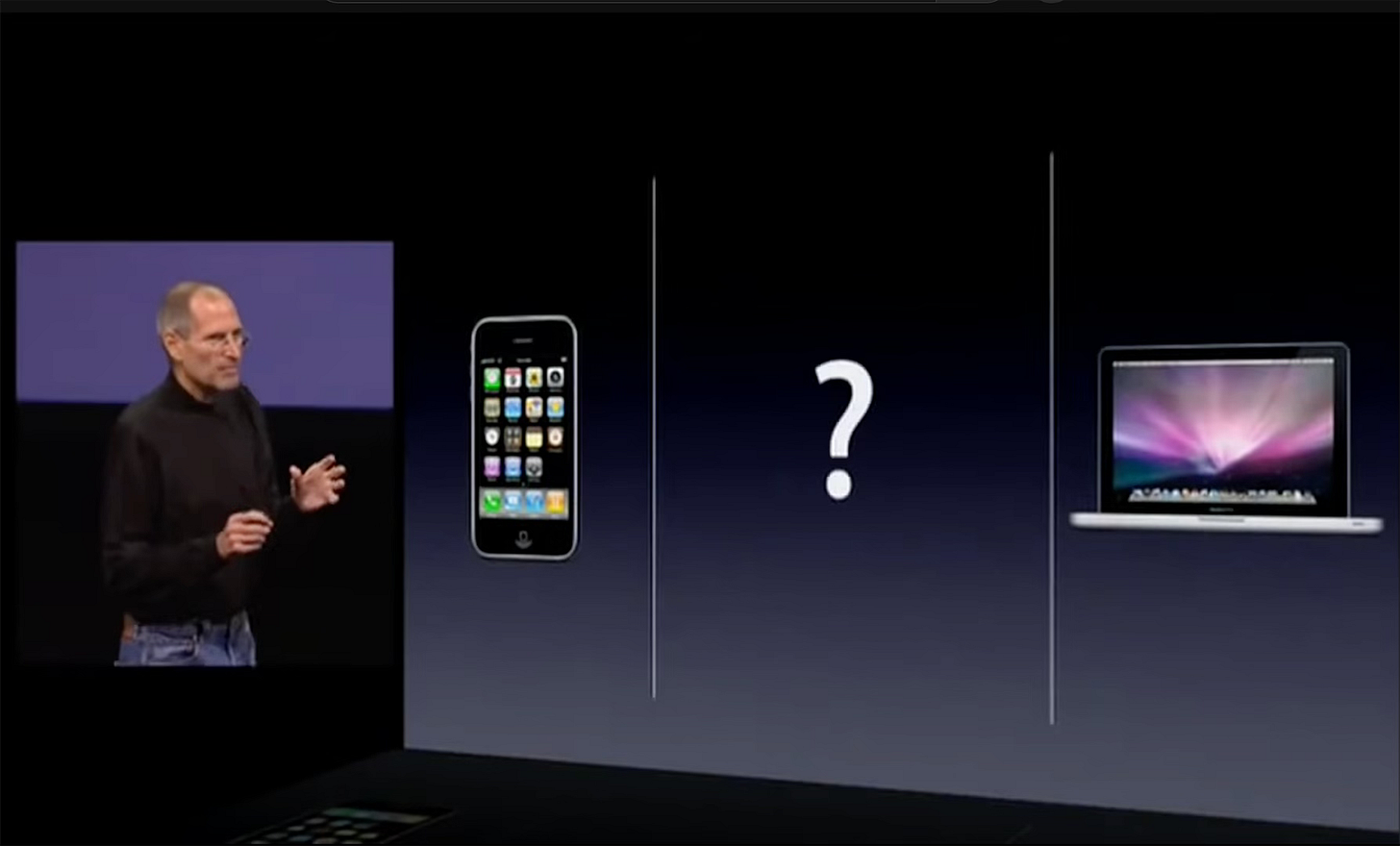
To define that new space, Jobs focused on a range of functions he claimed iPad could deliver better than either of Apple’s established platforms—explaining that iPad is the optimal device for browsing, viewing, reading, and games.
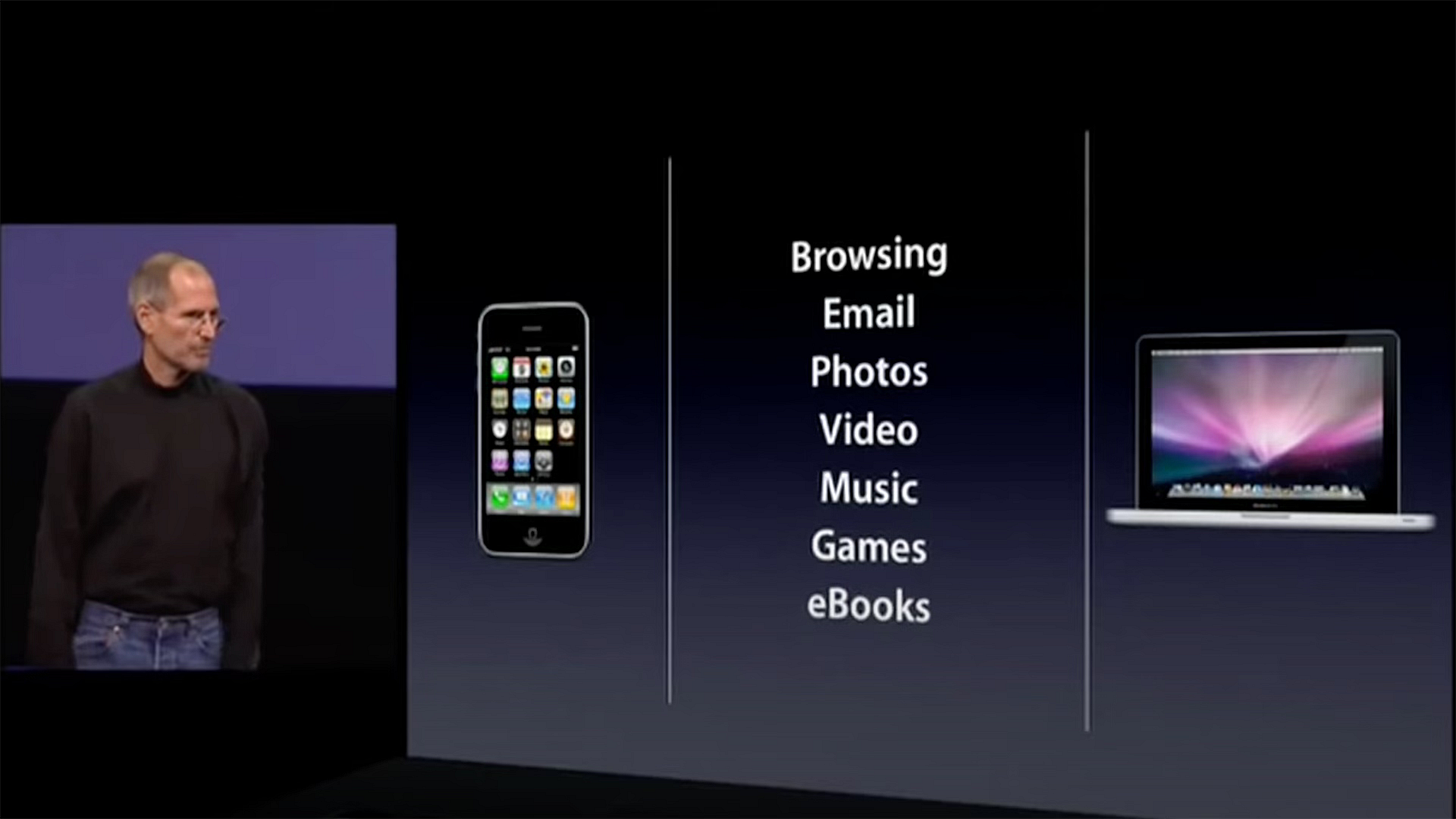
It was media-consumption—not media-creation—that iPad was meant for. Steve claimed an iPad would deliver a superior user-experience for browsing compared to either Mac or iPhone. To underline the point, he conducted his demo seated in a comfy chair, adding a layer of physical posture to the term “positioning.”
Almost immediately, however, it was clear, that the boundaries Jobs set around the iPad were permeable. Apple began to blur the lines even before the intro event was over, offering iPad versions of their office-productivity apps: Pages, Numbers, and Keynote.
Barely a year later, in 2011, the boundaries came down almost entirely as Apple spotlighted versions of their consumer-level creative apps, GarageBand and iMovie, both tweaked for a multi-touch interface. iPad was on its journey to becoming a tool for creating as well as consuming media.
Four years after that, in 2015, Apple elevated iPad to the professional-level by introducing, not only the iPad Pro and Magic Keyboard, but also the Apple Pencil, providing graphic artists a significant advance over finger-painting on glass. From that point on, the overlap of categories of creative work you could pursue with either a Mac or an iPad Pro expanded dramatically.
The burgeoning Mac/iPad convergence passed another milestone in 2019 when Apple gave iPad its own operating system, iPad OS, to support features such as multi-tasking. (Prior to that, both iPhone and iPad shared iOS).
The high-level pro apps began rolling in. Adobe offered iPad versions of Photoshop (2019) and Illustrator (2020). In 2023, Apple released iPad versions of their own professional video and music apps—Final Cut Pro and Logic Pro.
This year, Apple gave iPad an even stronger claim on being a proper tool for creative professionals when they designated the new iPad Pro as the first product to be powered by their most advanced silicon, the M4 chip. They also brought out an Apple Pencil Pro that supports additional interactions and offers haptic feedback, and they enhanced the Magic Keyboard to be more Mac-like than ever.
With those advancements, iPad Pro has now encroached so far into Mac territory that I half expected to see a MacBook nestled among the artistic and musical instruments consigned to obsolescence by Apple’s massive trash compactor.
As with each new release of the past few years, people are pondering whether we have finally reached the point where you can confidently choose an iPad Pro to replace your MacBook. Search online—on Reddit, tech sites, TikTok, YouTube, etc.—and you’ll find a ton of reviewers weighing in on that question. The consensus? A resounding “maybe.” Yes for some people, but probably not for everyone. While there’s now considerable overlap between the Mac and the iPad, each device retains unique merits. Your choice will depend on your requirements and how much you’re willing or able to spend.
Based on Steve Jobs’s original positioning, Apple offered us a rationale to sell us both an iPad and a MacBook. Fourteen years later, does that rationale hold up? Joanna Stern, Wall Street Journal tech reviewer, offered this take: a customer looking for Apple’s best portable computing device has three options:
A: $999-and-up MacBook Air or Pro
B: $999-and-up iPad Pro plus a separately sold Magic Keyboard
C: Second mortgage so he can buy both
C is correct! Welcome to Apple’s you-can’t-have-it-all computer lineup.
Crushing Luxo Jr. WTF?
I missed it the first few times watching “Crush!” but now that I’ve spotted it, I can’t unsee it. Right there on the squishing machine—alongside the paints, drawing board, chess set, and assorted musical instruments—sits Pixar’s brand mascot, Luxo Jr.
What’s that all about?
It’s a glaring anomaly. Unlike every other doomed item on the platform, Luxo Jr. doesn’t exist in the real world. It’s not even a physical object. It’s a cartoon character, a digital model. Why is Apple crushing some other company’s IP?
When John Lasseter dreamed up Luxo Jr. in 1986, his fancy was inspired by a real product—the Luxo L1 lamp—a task light designed in Norway by Jac Jacobson in 1937. Easily adjusted with spring-supported arms, the popular Luxo lamp was once nearly ubiquitous in design and architectural studios.
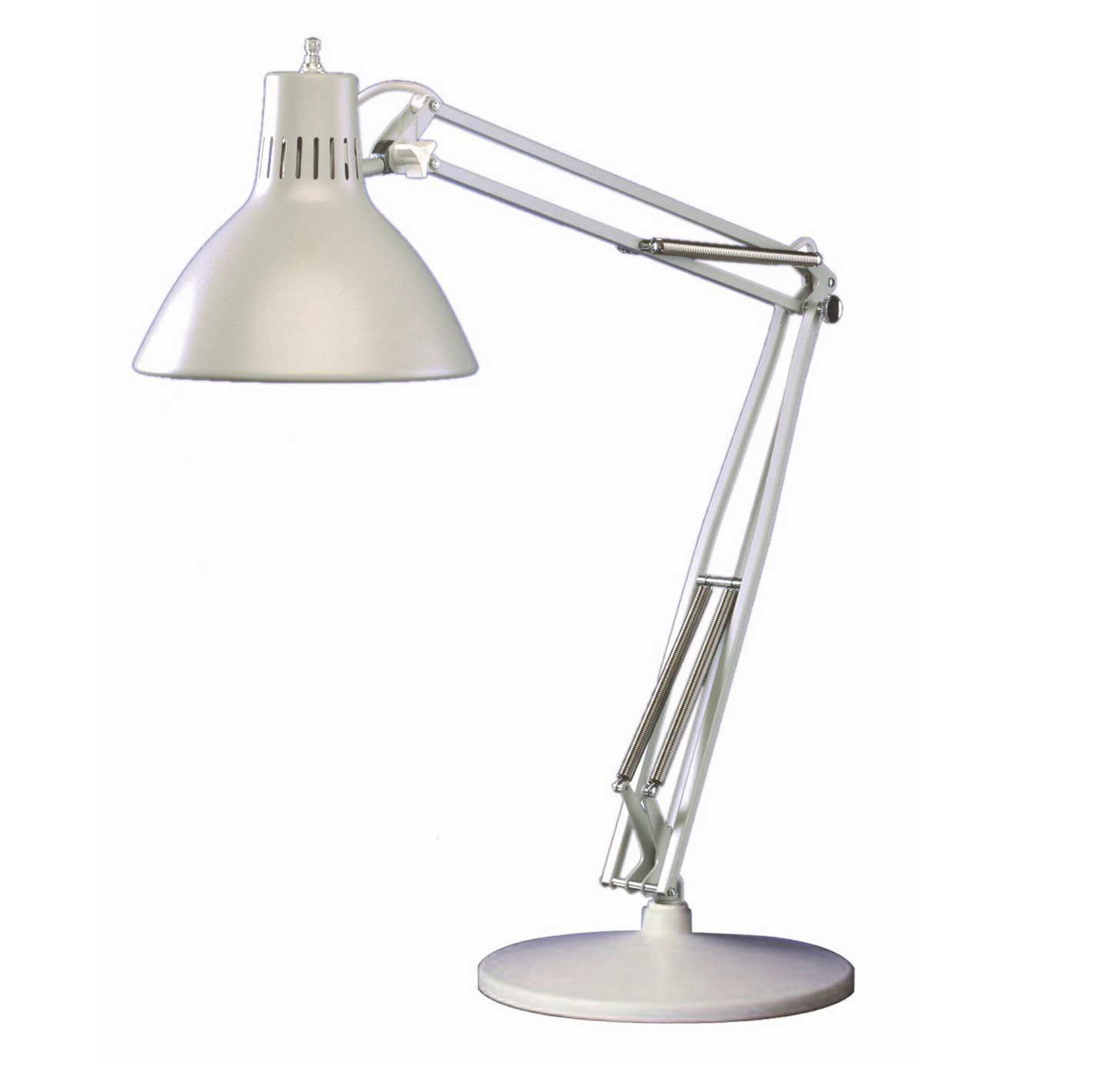
The original Luxo lamp would seem to be precisely the kind of creative tool that Apple would have scrunched down into the iPad Pro. It might have subtly reinforced that iPad has a self-illuminating Ultra Retina XDR tandem OLED display capable of 1000 nits, (1600 nits peak). (Translation: iPad Pro carries its own light. Very bright.)
For some reason, though, instead of crushing a real task light, Apple chose to demolish the Pixar logo. I’m still not sure why.
Certainly, Apple didn’t mean to imply that iPod Pro would crush Pixar—especially given the animation studio‘s history with Apple founder and rescuer Steve Jobs. Early in his exile from Apple, Jobs bought the core of what became Pixar from George Lucas. Jobs then served as Pixar CEO, financed their early productions, negotiated distribution deals with Disney, and took the company public in 1995, becoming a billionaire in the process. From 1997 through 2006, Steve simultaneously held the position of CEO at both Pixar and Apple. So, I can’t imagine that Apple meant it as a broadside at Pixar or Pixar’s current parent company, Disney.
My best guess is that Luxo Jr. is simply meant to stand in for the field of computer animation. I think that all Apple was trying to say that is that iPad is a good tool for animators. But that would be a level of symbolic abstraction unlike anything else we see in the ad. I can’t avoid thinking of the old Sesame Street jingle:
One of these things is not like the others, One of these things just doesn't belong, Can you tell which thing is not like the others By the time I finish my song?
Origin story
In an interview with Harry McCracken, Lasseter described his process in dreaming up the image of a big-headed baby lamp:
“I modeled one Luxo lamp, and then a friend of mine came over with his baby. And then I went back to working on the lamp, and wondered what the lamp would look like as a baby. I scaled different parts of it down: the springs are the same diameter, but they're much shorter. The same with the rods. The shade is small but the bulb is the same size. The reason the bulb is the same size is because that's something you buy at the hardware store; it doesn't grow.”
Luxo Jr. starred in the eponymous first Pixar short, which was nominated for an Academy Award. The company that makes Luxo lamps seemed content to reap the free publicity for their brand—until merch-happy Disney tried to sell actual, physical Luxo Jr. lamps. At that point, Luxo sued for trademark infringement. In the settlement, Disney agreed that Luxo Jr. would no longer manifest as a physical lamp in the real world. It remains only as the image and idea of an animated baby lamp and the logo of an animation studio.
1990: Apple’s Homage to Pixar
Flashback: Another Apple product. Another breakthrough chip. Another intro video.
This time, however, featuring a full-size Luxo-ish Lamp.
In 1990, demonstrated the performance of the new Macintosh IIfx with a short bit of computer animation that was actually rendered on Macintosh. Of course, in those days, it took a bank of Macs sharing the workload. But the point was made.
Spoiler Alert: In the video, director Carl B. Stone, then working in Apple Creative Services, included his own sly homage to Pixar and Luxo Jr.



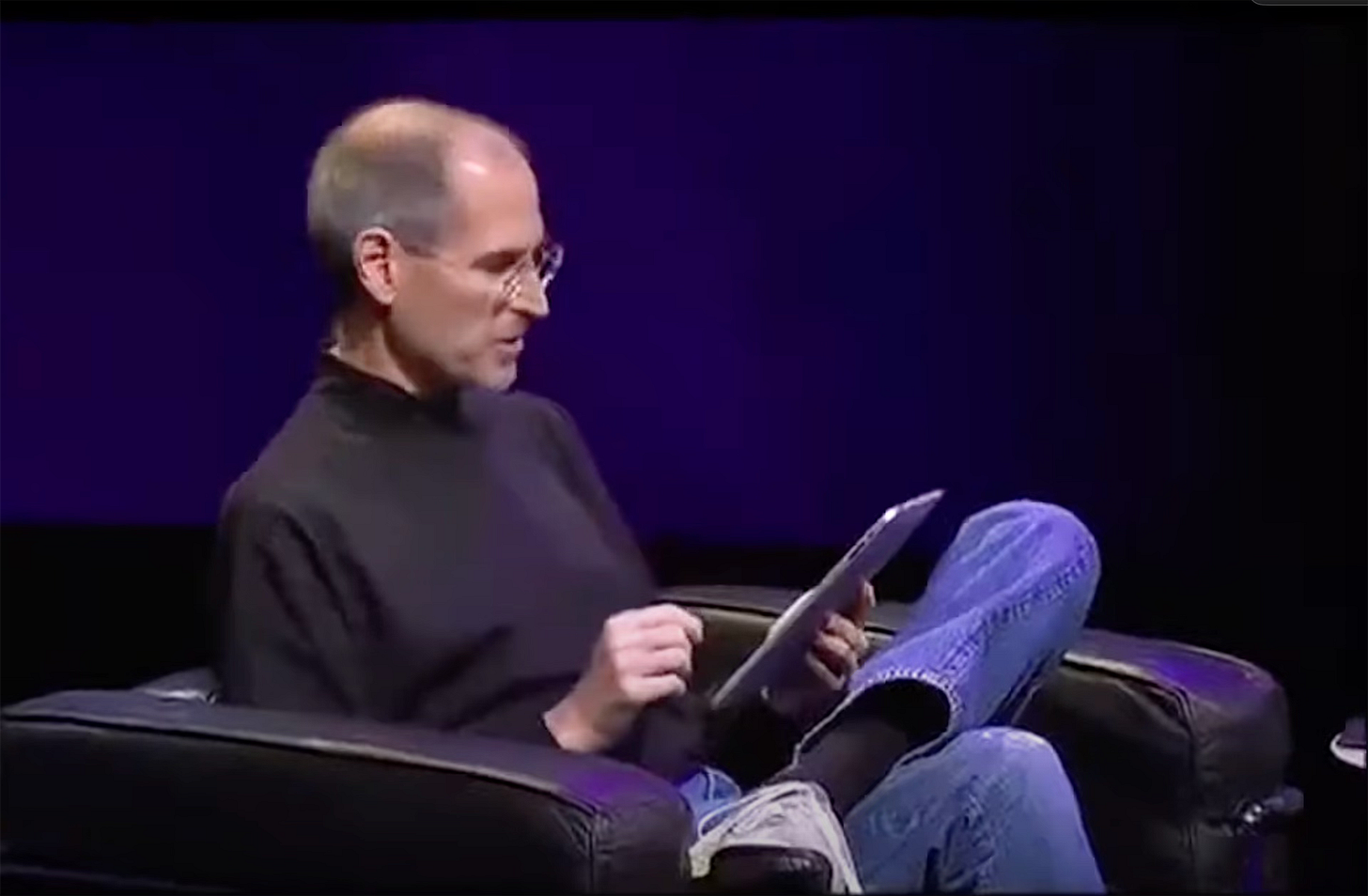
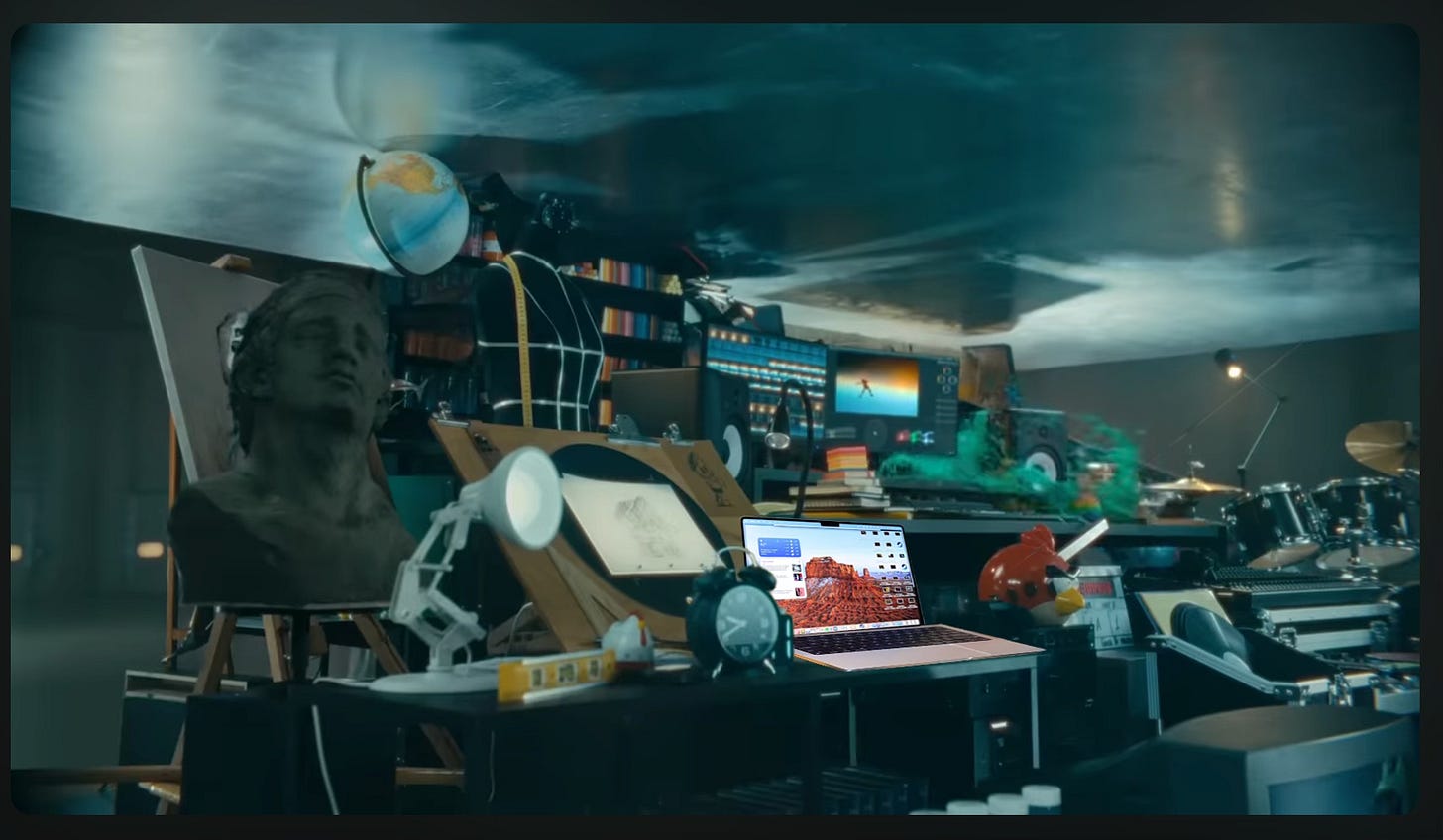
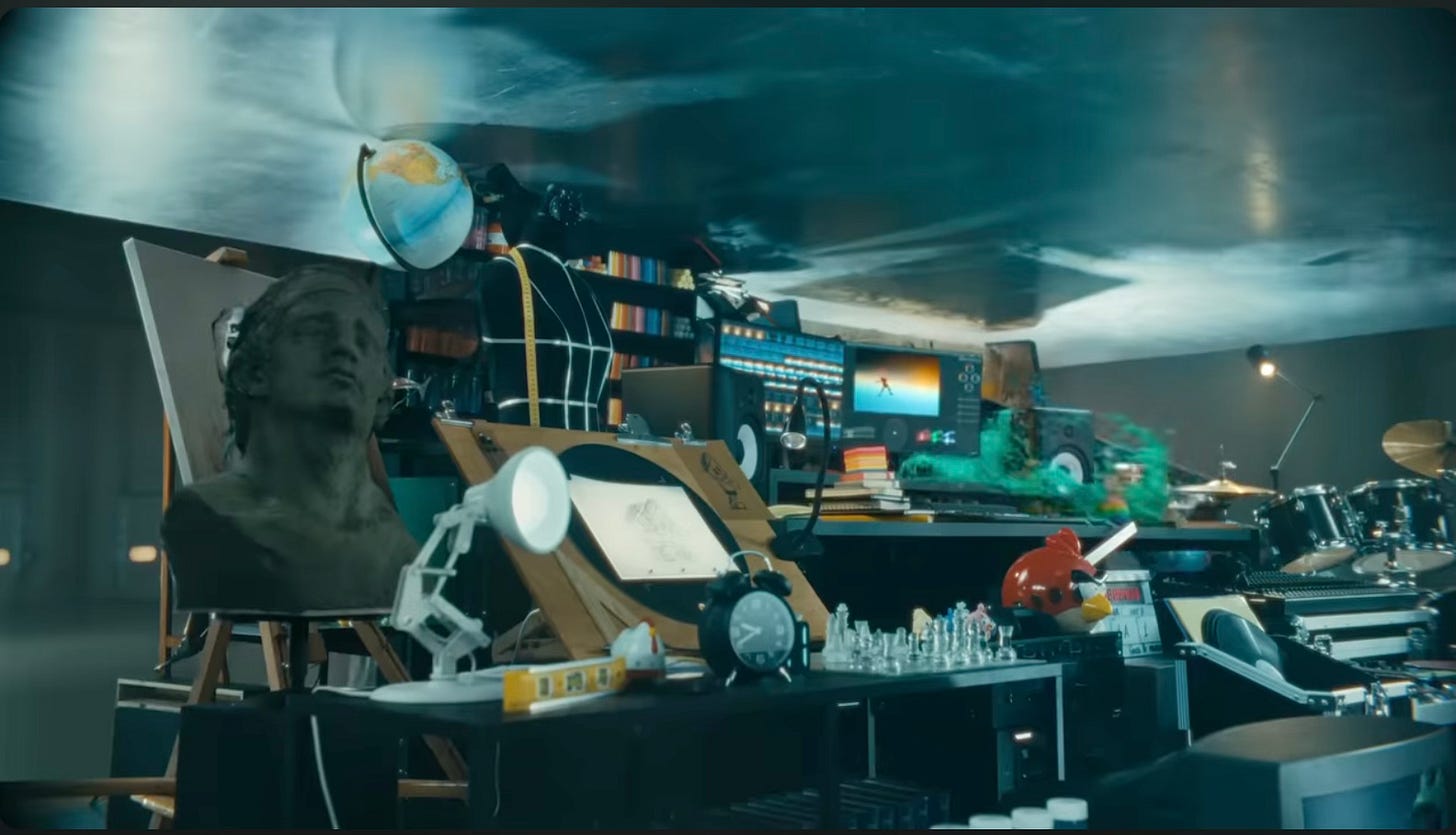

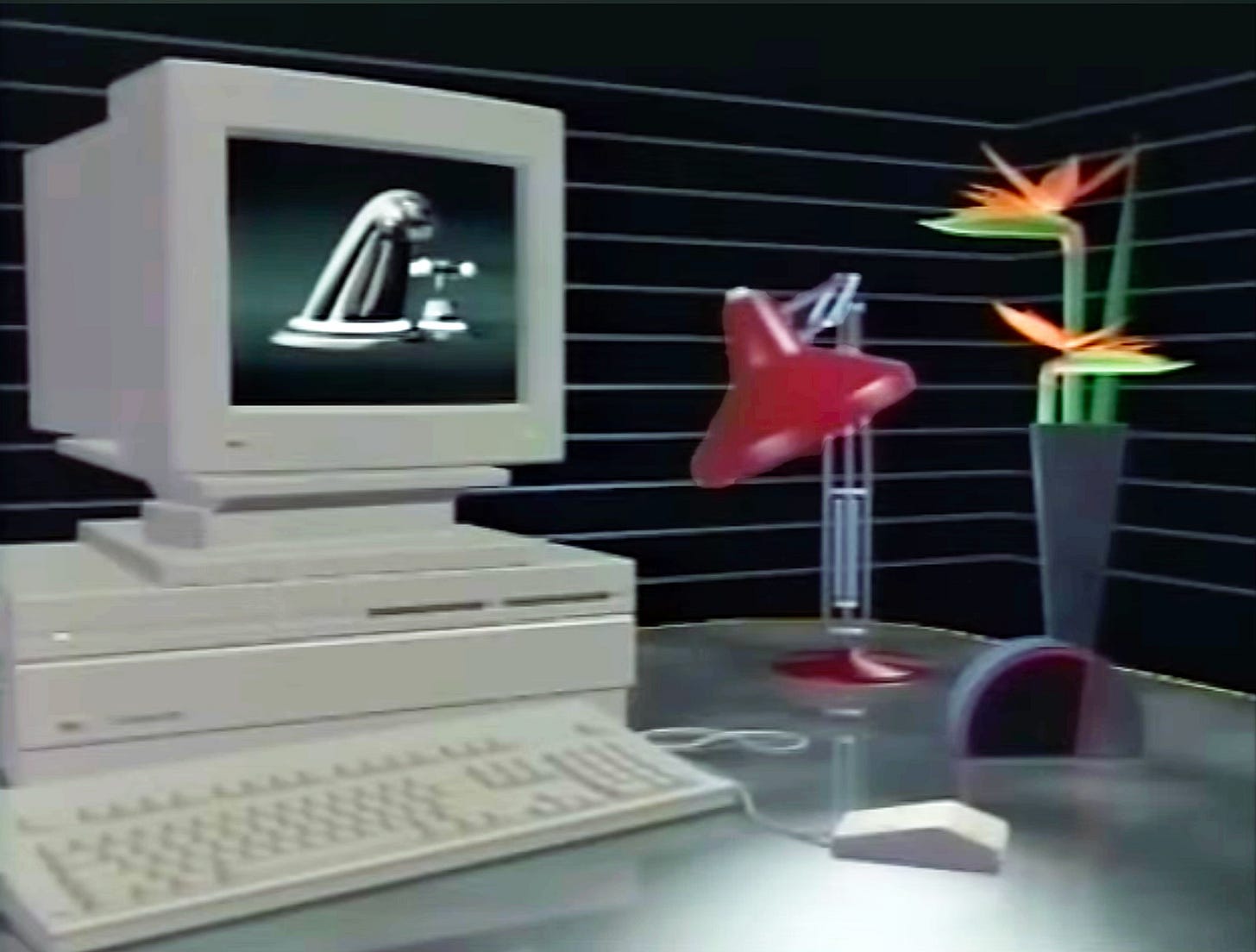
I always love hearing your thoughts on Apple in the Modern Era! Can't believe I didn't notice Luxo myself.